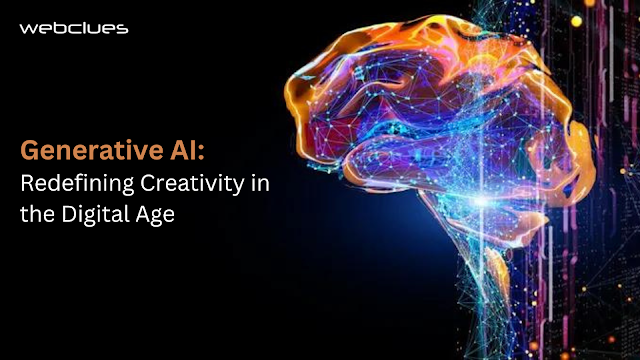Amid the digital revolution, a remarkable phenomenon is reshaping the landscape of creativity: Generative Artificial Intelligence. This transformative technology is not merely automating repetitive tasks or optimizing existing processes; it is fundamentally altering the way we conceive, produce, and appreciate creative works. Generative AI is ushering in a new era where machines are not just tools but active collaborators, pushing the boundaries of human imagination and redefining creativity itself.
At its core, Generative AI refers to algorithms and systems designed to generate content autonomously, often based on large datasets and learned patterns. Unlike traditional AI approaches focused on problem-solving or classification, generative models are geared towards creative output, ranging from images and music to text and beyond. By harnessing the power of machine learning, neural networks, and advanced algorithms, generative AI systems can produce novel, often surprising, and sometimes indistinguishable outputs from human-created content.
One of the most prominent applications of generative AI is in the realm of visual arts. With techniques such as Generative Adversarial Networks (GANs) and Variational Autoencoders (VAEs), AI systems can generate realistic images, paintings, and even entire landscapes. These creations can be inspired by existing artworks or entirely original, blurring the line between human and machine authorship. Artists and designers are leveraging generative AI as a tool for inspiration, exploration, and augmentation, enabling them to explore vast creative spaces and produce works that transcend conventional boundaries.
Moreover, generative AI is not limited to static images; it extends its reach to dynamic mediums such as music and video. AI algorithms can compose original pieces of music, mimicking the style of classical composers or generating entirely new genres. Similarly, in the realm of video production, generative AI can assist in tasks such as scene generation, special effects, and even storytelling. These capabilities empower creators to explore new avenues of expression and experimentation, opening doors to unforeseen artistic possibilities.
Beyond the realm of visual and auditory arts, generative AI is also making waves in literature and storytelling. Natural Language Processing (NLP) models like OpenAI's GPT series are capable of generating coherent and contextually relevant text based on prompts provided by users. These AI-generated texts can range from short stories and poems to entire articles and novels. While not without limitations, such as occasional lack of coherence or originality, generative AI in literature holds promise as a tool for brainstorming, ideation, and even collaborative storytelling endeavors.
The impact of generative artificial intelligence goes beyond its creative outputs; it is reshaping the creative process itself. Traditionally, creativity has been viewed as a uniquely human trait, driven by inspiration, intuition, and emotion. However, generative AI challenges this notion by demonstrating that creativity can emerge from algorithms and data-driven processes. In doing so, it invites us to reconsider the nature of creativity and our relationship with technology. Rather than viewing AI as a threat to human creativity, we can see it as a catalyst for innovation, offering new tools and perspectives to enhance our creative endeavors.
Moreover, generative AI has the potential to democratize creativity, making it more accessible and inclusive. By providing tools and platforms for creative expression that do not require traditional skills or expertise, generative AI empowers individuals from diverse backgrounds to participate in the creative process. Whether it's generating art, composing music, or writing stories, anyone with access to generative AI tools can unleash their imagination and contribute to the cultural tapestry of society.
However, alongside its promises, generative AI also raises ethical and philosophical questions that warrant careful consideration. Issues such as authorship, ownership, and the potential for misuse loom large in discussions surrounding AI-generated content. As generative AI becomes more sophisticated, the lines between original and AI-generated works may blur, posing challenges to intellectual property rights and creative attribution. Furthermore, the risk of AI being used maliciously to produce misinformation, propaganda, or deepfakes underscores the importance of ethical guidelines and regulatory frameworks in the development and deployment of generative AI technologies.
In conclusion, Generative AI represents a paradigm shift in the way we think about creativity in the digital age. By harnessing the power of algorithms and data, generative AI is expanding the horizons of artistic expression, challenging traditional notions of authorship and creativity, and inviting us to reimagine the creative process itself. While it presents opportunities for innovation and inclusion, it also raises important ethical considerations that must be addressed as we navigate this new frontier of creativity and technology. So, are you ready to explore the limitless possibilities of Generative Artificial Intelligence? Unlock your creative potential with WebClues Infotech – leading the way in innovative AI solutions.


0 Comments